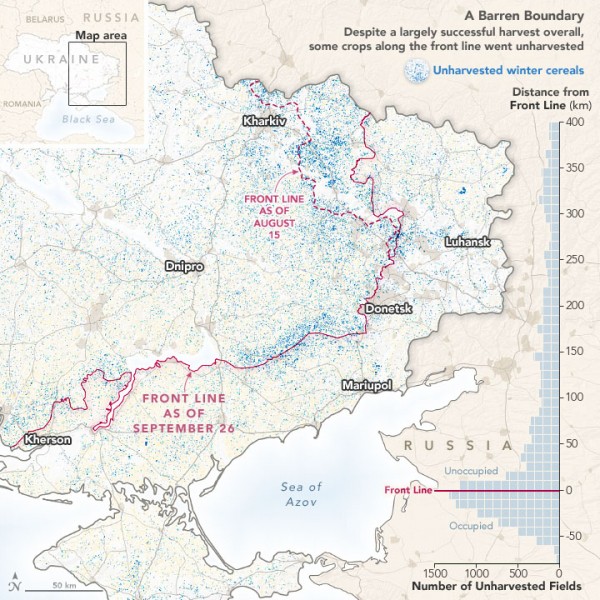NASA Harvest Researchers Find Larger Wheat Harvest in Ukraine Than Expected
Russia’s further invasion of Ukraine in February 2022 fueled widespread concern about the effects on the country’s farming sector. In the early days of the crisis, food security specialists wondered if Ukrainian farmers would be able to harvest the wheat and barley they had planted the previous fall. They also worried that declining grain exports from Ukraine might throw global markets into turmoil and trigger food shortages continents away.
“Now we are starting to get answers,” said Inbal Becker-Reshef, director of the NASA Harvest program and research professor in the Department of Geographical Sciences. “Our satellite-based production numbers for the 2022 winter wheat crop in Ukraine make clear that farmers had a largely successful harvest.”
The NASA Harvest team calculated that farmers harvested 26.6 million tons of wheat in 2022, several million tons higher than expected in leading forecasts. “That’s down from the previous year’s record harvest of 33 million tons, but it’s close to the five-year average of 27.9 million tons,” Becker-Reshef added. However, Ukraine does not have access to 22 percent of that wheat in the eastern part of the country due to the war.
Image by Joshua Stevens, using data courtesy of Inbal Becker-Reshef, Josef Wagner, Shabarinath Nair, and Yuval Sadeh (NASA Harvest/University of Maryland/University of Strasbourg), PlanetScope data from Planet, and Landsat data from the U.S. Geological Survey. Story originally published by NASA Earth Observatory.
Published on Mon, 12/05/2022 - 15:32


